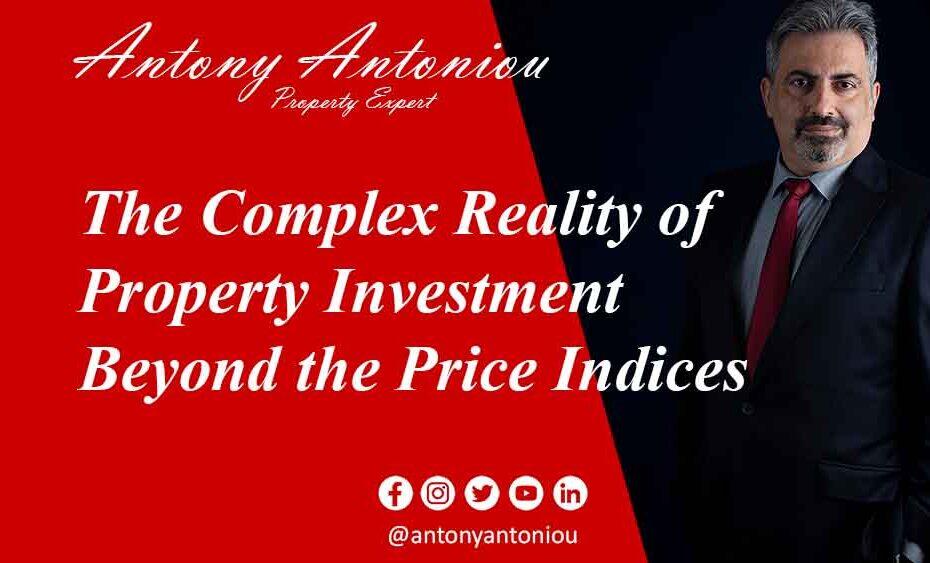The Complex Reality of Property Investment – Beyond the Price Indices
**Introduction**
In the realm of personal finance, the allure of property investment has been ingrained in our minds. But as we delve deeper into the complex world of real estate, it becomes apparent that the narrative is not as straightforward as we’ve been led to believe. While house price indices are frequently used as benchmarks to gauge the profitability of property investment, they often fail to account for a critical factor – capital improvements. In this blog post, we’ll explore the nuances of property investment, the limitations of house price indices, and the need for a more comprehensive assessment.
**Unveiling the Reality**
Have you ever sifted through old invoices and documents and stumbled upon a treasure trove of past expenses? This happened to me recently when I uncovered a pile of repair and renovation bills from a former home. The house, a charming cottage in Northampton, demanded meticulous maintenance to retain its allure. These repair costs, akin to routine living expenses, were part and parcel of accommodating a family.
Distinct from these maintenance costs were the invoices for property upgrades and extensions. These were investments made with the expectation of substantial returns. Indeed, upgrading and expanding properties is a common endeavor undertaken by owner-occupiers, seemingly bolstered by house price indices that often suggest impressive investment gains. However, a closer examination of these indices might unveil a more intricate reality.
**Deconstructing the Indices**
House price indices, such as those published by Nationwide Building Society, Halifax, and the Office for National Statistics (ONS), are widely accepted indicators of property market health. These indices, despite varying methodologies, generally track each other closely. Nationwide and Halifax compile data from mortgage books, while the ONS incorporates cash purchases in addition to mortgage-based transactions.
These indices are meticulously crafted to account for factors like property type, new build vs. existing, region, neighborhood type, and more. However, here lies a crucial limitation – these indices primarily measure the price of a “typical” house, and not the true return on invested funds. The inherent flaw is that these indices fail to adjust for the ongoing upgrades and improvements that continually raise the quality of housing stock.
**The Unseen Factor: Capital Improvements**
Property quality is a dynamic factor that continuously evolves, predominantly due to ongoing home improvements. Yet, these improvements are not adequately factored into price indices. Over time, housing stock improves in quality, thereby affecting price indices, which in turn do not account for the expenditure on upgrading.
To provide a more accurate depiction of investment returns, we could explore the possibility of deducting the overall capital improvement spending from the imputed increase in property value. Surveys by organizations like Houzz and Home attempt to measure national spending on home improvements, but these often lack a clear distinction between repairs and enhancements.
**Beyond Planning Permission: A Hidden World of Upgrades**
Even when we consider official data, such as the Valuation Office’s “improvement indicators,” there’s a realization that it only scratches the surface. Many upgrades don’t require planning permission, making them difficult to track. For example, homeowners can undertake permitted development rights like extensions, conversions, and garden enhancements without formal approvals.
These less conspicuous yet substantial adjustments to property quality are frequently overlooked until old documents resurface, revealing the often-overlooked investments that homeowners make to enhance their residences.
**The Quest for Accurate Measurement**
The heart of the matter lies in achieving accurate measurement. House price indices, while informative, fall short of portraying the true investment returns of property due to their failure to factor in quality improvements. What’s needed is an adjusted “constant-quality” index, one that considers inflated prices minus investment expenditures. Such an index could present a more accurate picture of property investment’s true potential.
As housing holds immense significance in gauging inflation and the broader economy, there’s a strong case for further research by entities like the ONS or the Bank of England’s research department. By delving into the world of property investment beyond the surface-level price indices, we can better comprehend the intricate dynamics that shape this supposedly lucrative asset class.
**Conclusion: Decoding the Complex World of Property Investment**
As we unravel the layers of property investment, it becomes clear that the conventional narrative doesn’t capture the full story. House price indices, while widely used as indicators of investment success, fail to account for a crucial element – capital improvements. The reality is more intricate than the indices suggest, and a more comprehensive understanding is essential for making informed investment decisions.
**Key Takeaways:**
– Property investment is often seen as a reliable money-spinner, but its true profitability is more nuanced than commonly portrayed.
– House price indices, like those from Nationwide, Halifax, and the ONS, are widely used to gauge investment returns, but they overlook the impact of ongoing property upgrades and improvements.
– Property quality continually evolves due to enhancements and renovations, which directly influence housing prices and investment returns.
– The distinction between repairs and enhancements in surveys makes it difficult to accurately measure national spending on home improvements.
– “Improvement indicators” only scratch the surface of property upgrades, overlooking many changes that enhance property value without formal planning permissions.
– To accurately assess property investment’s true potential, a new index that factors in capital improvement expenditures is required.
– Housing’s influence on inflation and the broader economy underscores the importance of in-depth research by authoritative bodies like the ONS or the Bank of England.
In a world where property investment is a cornerstone of financial planning, it’s crucial to look beyond the surface and understand the complexities that shape this asset class. By doing so, we can make more informed decisions that reflect the true nature of property investment, rather than relying solely on headline indices.


I completely agree, in the past, we had a period of unsustainably low interest rates, followed by the increasing regulation of the last few years, which have completely changed everything.